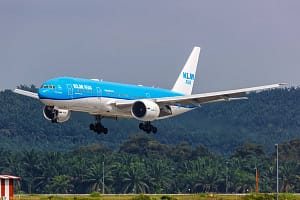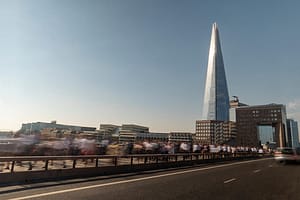One traveller called the airport a “god-forsaken hell hole” while another branded it a “horrible, horrible place”
Long queues, inadequate seating and a poor check-in experience – London Luton Airport won the not-so-coveted title of Britain’s worst airport in 2015.
The airport scored a derisible 40% customer satisfaction score in a survey of 11,266 people by Which? magazine.
A quick scan on Twitter also shows that passengers aren’t thrilled by their travel experience through the airport – while one traveller called the airport a “god-forsaken hell hole” another branded it a “horrible, horrible place”.
But Luton Airport CEO Nick Barton is a man with a plan. He’s spearheading the airport’s £110m redevelopment programme that, he says, will lead to a 50% increase in annual capacity, from 12 million to 18 million people by 2020.
How’s he going to achieve this? We chatted with Barton for answers:
Q. Luton airport voted was worst in Britain – what are you doing about that?
We are committed to ensuring that passengers have the best experience possible, the £110m investment is an important part of this and we’re always asking for passenger feedback as they travel through the airport. Our own passenger satisfaction research carried out in 2015 found that:
- 97% of passengers ranked the check-in process as excellent or very good
- 95% of passengers ranked our security staff as excellent or very good
- 92% of passengers ranked the security screening process as excellent or very good
Q. Luton has a bit of an image problem and is considered to be “poorly connected” – what are you doing to change its image?
We are working particularly hard to improve local transport links. A major upgrade to Junction 10a of the M1 has already been completed to make it easier to get to the airport. We are currently working hard to improve the rail link as well.
In December, the Thameslink service introduced overnight trains to the airport from London St Pancras in its timetable for the first time, and we expect to see Oyster card services right through to the terminal building introduced later this year. We are also working to introduce a dedicated Express service with four fast trains per hour as part of the upcoming East Midlands Trains franchise, as well as continuing planning work on a possible fixed link between Luton Airport Parkway station and the terminal to replace the existing shuttle buses.
Q. What kind of a role does Luton Airport, being a smaller airport, play to address the current air capacity restraints in the South East?
London Luton Airport is already an airport of strategic importance to the UK. In 2015 the airport carried 12.3 million passengers making it the UK’s fifth busiest airport, as well as being the largest, by some distance, when it comes to the number of private aircraft handled in the UK. This point was not lost in the Davies Commission’s report, which highlighted the importance of airports such as London Luton Airport in meeting future capacity needs. Our £110m redevelopment programme is testament to this, as it will lead to a 50% increase in annual capacity, from 12 million to 18 million, as early as 2020.
Q. London Luton Airport is estimated to add £1bn a year to the economy by 2030 – how do you plan to achieve that?
Our redevelopment project is a central part of our increased economic contribution, particularly through the number of additional jobs that will be created. The redevelopment will directly create 3,700 new jobs at the airport by 2030 – an increase of 39%. Indirectly, the airport currently supports 27,200 jobs; this will increase to 37,700 by 2030. The airport’s contribution to the national economy is forecast to increase by 77% from £1.3bn in 2013 to £2.3bn per annum by 2030 (£4,300 per minute, every day of the year).
The value of our tax receipts to HM Treasury will also increase as passenger numbers rise – primarily in the form of passenger duty and corporation tax.

Nick Barton, CEO, London Luton Airport
Q. Tell us about the £100m expansion on the cards for Luton – how’s that coming along?
Following the acquisition of London Luton Airport by AENA and Ardian, we are investing £110m to expand capacity from 12 million to 18 million passengers by 2020 and transform the passenger experience. Work is now underway, with the Secretary of State for Transport, Patrick McLoughlin MP formally “breaking ground” at London Luton Airport in January. When complete improvements will include:
- A complete remodelling of the terminal to create a quick, efficient, friendly and convenient experience.
- Doubling of the existing retail space, introducing new exciting shopping and dining options and a new £1m executive lounge.
- Double the existing capacity in the security search, immigration and baggage reclaim areas.
- A new multi-storey car park with over 1,500 spaces.
- Major transport improvements, including the addition of overnight trains from London St Pancras, and the introduction of Oyster card services through to the terminal building.
- An expanded range of airlines and routes, including more frequent services to popular cities, and anticipated new flights to exciting new destinations such as Dubai, Orlando and Cancún.
Q. What are the biggest challenges in your job?
The single biggest challenge we face is making sure we deliver on our plans to constantly drive up the passenger experience in a 24/7 operation whilst we undergo a major redevelopment and experience record numbers of passengers using the facility.
We’re determined to not only make the airport bigger but better and the initial signs are very positive. For example, our relocation of security search to an enlarged space on the ground floor with the latest security equipment has been well received by the travelling public who regularly pass comment on the environment’s speed, ease and convenience.
Q. What is the solution for London’s airport capacity, according to you?
London’s airport system needs to grow and thrive in the short to medium term as well as in the long-term. We agree with the Davies Commission that it’s imperative for airports other than Gatwick and Heathrow to fulfil their potential, which is why we’re currently investing £110m to expand capacity at London Luton by 50% in the next four years.
Expanded capacity is only part of the solution. London needs an integrated transport plan focused, particularly on rail connections, to improve transport links to and from London’s airports and free up the additional capacity the UK so vitally needs.
Q. Heathrow or Gatwick – which airport’s expansion do you support and why?
I agree that additional runway capacity is required but I don’t favour one option over the other. Wherever the extra runway is built in the south east it’s important to realise that it will only ever be part of the solution to the capacity problem. Just as important is the need to realise the full potential of all the runways we already have. Even with the addition of a seventh London runway, according to the Department for Transport’s own projections capacity will still struggle to meet demand by 2030.
Thank you for your time.
NOW READ:

There could be more Tube strikes on the way as a new row has erupted







Leave a Comment